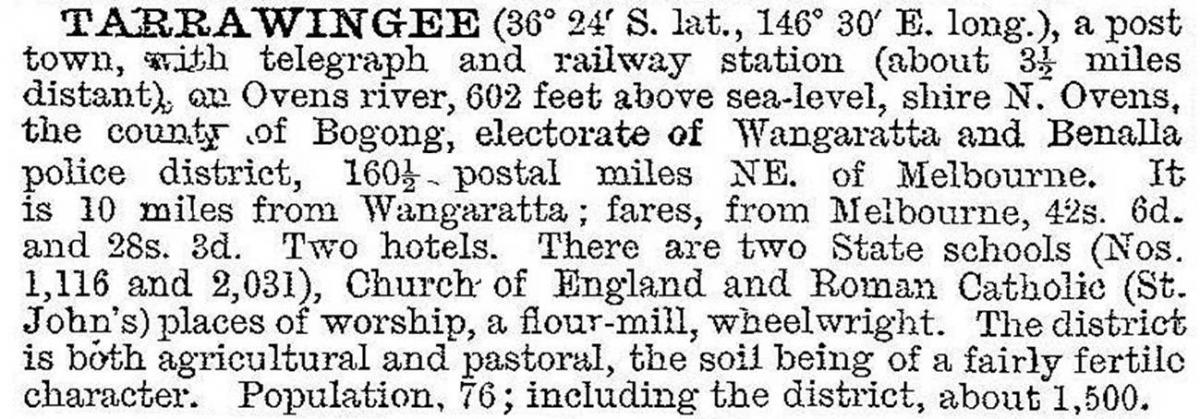Tarrawingee
Tarrawingee, a rural village on the Ovens Highway in north-eastern Victoria, is 12 km east of Wangaratta. It is situated in open, relatively flat country immediately north of the Ovens River and the adjoining flood plain.
Tarrawingee is named after the Tarawingee pastoral run taken up by William Bowman in 1837. It is thought that the name is derived from an Aboriginal word meaning emu.
The Tarrawingee village was located on routes to the Eldorado and Beechworth gold diggings. In the 1860s additional brick buildings were constructed in expectation of the railway line to Beechworth passing through Tarrawingee. By then there were Anglican and Catholic churches, and schools (1858) opened by the Catholic church and the Government. Surviving examples of the building activity are the Plough Inn and stables (1864) and Carinya (Ladson's Store) comprising a shop, residence and hall (1861-67). All are on the Victorian Heritage Register. The railway line bypassed Tarrawingee and activity declined.
In 1903 the Australian handbook described Tarrawingee:

In 1987 Carinya and Ladson's Store were restored and opened as a tourist attraction with exhibits and retail activities. In addition to the historic buildings, Tarrawingee has a church, a recreation area, a golf course, a public hall and the Plough Inn.
The Tarrawingee Community Plan 2011-12 outlines a range of infrastructure, recreational, commercial and social developments.
Tarrawingee's census populations have been:
| area | Census date | Population |
|---|---|---|
| Tarrawingee | 1861 | 160 |
| 1871 | 270 | |
| 1933 | 197 | |
| 1961 | 146 | |
| Tarrawingee and environs | 2006 | 507 |
| 2011* | 484 |
*census area not centred on Tarrawingee
Further Reading
J. Colin Angus, Wangaratta Shire centenary - 1967, Shire of Wangaratta, 1967
L.J. Blake, (ed) Vision and realization: a centenary history of State education in Victoria, vol 3, 1973


